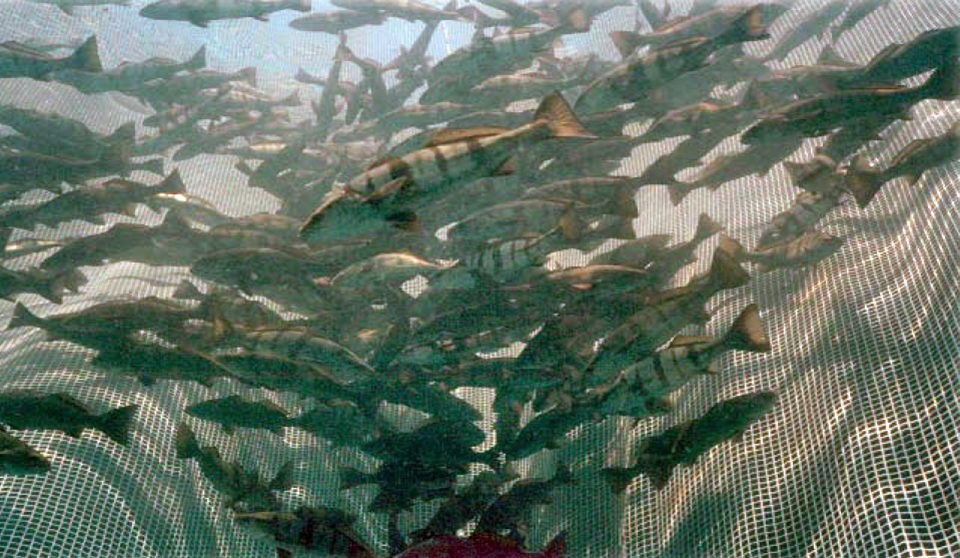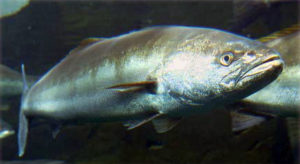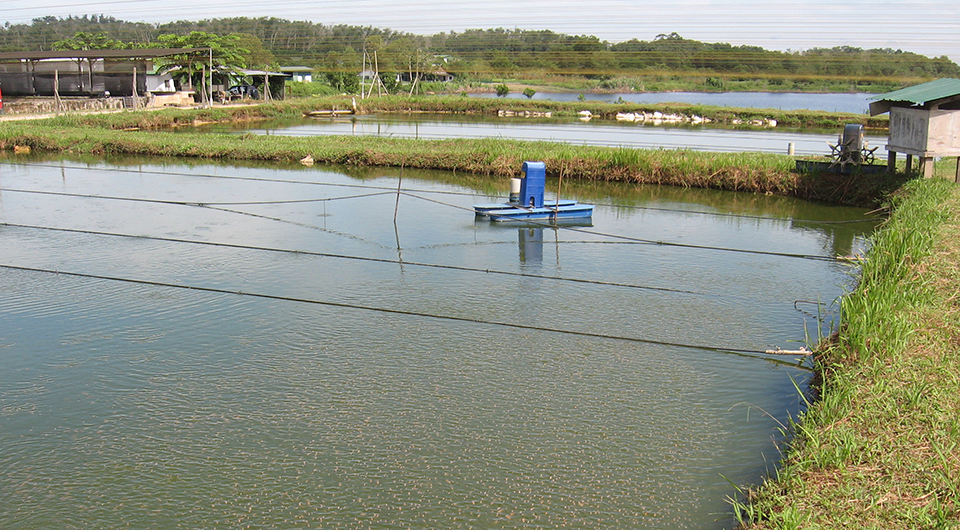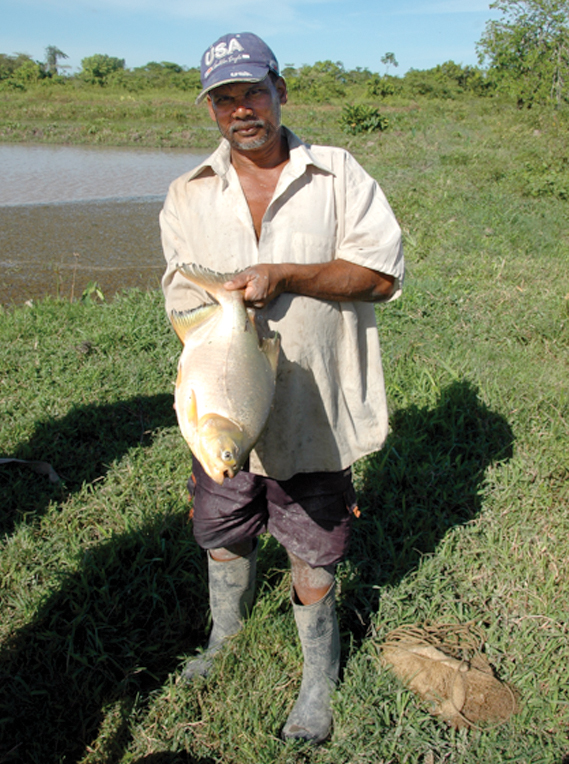Stock enhancement, sea ranching

By the year 2020, the worldwide demand for seafood – both finfish and shellfish – will have risen substantially. While most experts recognize that aquaculture must supply world markets with additional seafood products, technologies such as stock enhancement and sea ranching also show promise in enhancing the production of commercial marine species. This is resulting in cautious optimism that some stocks formerly in decline can be restored to the clear benefit of fishing communities and the general public.
Research over analysis
Based largely on hatchery technology, restocking and stock enhancement have the potential to reduce the time it takes to rebuild overexploited fisheries and/or improve the productivity of “healthy” fisheries. Restocking involves the release of cultured juveniles to restore spawning biomass to levels where a fishery can again support regular harvests. In stock enhancement, cultured juveniles are released or seeded to compensate for limitations in natural recruitment.
Despite the potential of such interventions, few restocking and stock enhancement programs have lived up to their promise. The reason for this is simple: For the most part, those funding such programs have favored biotechnical research over objective analyses of the need for intervention.
Many in the research community hope this approach will change and guide policymakers and researchers from both the private and public sectors to a new understanding of the potential achievements of enhancement and ranching programs for marine fish and shellfish.
Beyond juvenile production

For both capture fisheries and shell-fish operations, the key challenges in the years ahead are complex. First of all, reversing habitat degradation is vital, together with reducing fishing effort, removing excess harvesting capacity, and building the institutional arrangements needed to restore spawning biomass to more productive levels.
Many current research efforts in restocking and stock enhancement are designed to address problems related to the young stock – that is, to produce fit cultured juveniles at low cost and release them in ways that increase overall stock levels. Many encouraging attempts to overcome the risks associated with changing the genetic diversity of wild populations, introducing diseases, or changing the abundances of other valuable species in ecosystems through careless release of juveniles have been made.
As researchers working in these various fields gain new understanding, however, most agree that a new approach to restocking and stock enhancement is needed to identify the real potential of their proposed interventions to increase the productivity of selected coastal fisheries. The approach appears to have five basic parts:
- Integrate restocking or stock enhancement within management schemes that have the participation and understanding of users.
- Recognize that interventions should be applied to self-replenishing populations.
- Assess each population to determine the need for restocking or stock enhancement.
- Model the potential benefits of research investments to determine whether they are likely to add value to other forms of management.
- Proceed with releases of cultured juveniles only when substantial benefits are predicted.
Integrated management, modeling
Responsible methods for reducing the cost of producing juveniles, optimizing the survival of animals released in the wild, and minimizing the effects of releases on other species remain key elements of the new approach, and need concerted research. Fortunately, researchers are placing increasing emphasis on the integration of releases with other fisheries management measures, and their contribution to wider management goals.
Today, it is fortunate that quantitative assessment and modeling of the biological and economic dynamics of enhanced fisheries are increasingly recognized as crucial components in the evaluation of enhancement and alternative or additional management measures. Models and other assessment methods are now more widely available, and provide powerful tools for the evaluation of enhancement programs from early planning to full-scale operation.
However, preliminary assessments must come before significant investment is made in experimental research or production facilities, and before alternative management options are dismissed or delayed in favor of stock enhancement. By combining population dynamics and bioeconomic modelling with participatory planning, a broad-based assessment of alternatives will be promoted, and the influence of unrealistic expectations and partisan views on decisions will continue to be reduced.
Integrated management, modeling
Responsible methods for reducing the cost of producing juveniles, optimizing the survival of animals released in the wild, and minimizing the effects of releases on other species remain key elements of the new approach, and need concerted research. Fortunately, researchers are placing increasing emphasis on the integration of releases with other fisheries management measures, and their contribution to wider management goals.
Today, it is fortunate that quantitative assessment and modeling of the biological and economic dynamics of enhanced fisheries are increasingly recognized as crucial components in the evaluation of enhancement and alternative or additional management measures. Models and other assessment methods are now more widely available, and provide powerful tools for the evaluation of enhancement programs from early planning to full-scale operation.
However, preliminary assessments must come before significant investment is made in experimental research or production facilities, and before alternative management options are dismissed or delayed in favor of stock enhancement. By combining population dynamics and bioeconomic modelling with participatory planning, a broad-based assessment of alternatives will be promoted, and the influence of unrealistic expectations and partisan views on decisions will continue to be reduced.
Stock Enhancement, sea ranching meeting to address scientific advances
What practices show the most promise for rebuilding and enhancing existing stocks of fish and shellfish, and how can the scientific and research communities intervene in ways that benefit not only animal habitat and the environment, but also the people whose livelihoods depend on wild fisheries and shellfish operations?
Such issues will be discussed at the September 18-21 Symposium on Stock Enhancement and Sea Ranching in Seattle, Washington, USA. This third meeting in an international series will showcase the most promising new research and serve as a call to action for its most promising applications.
Through presentations by leading researchers, the program will cover themes that include the roles of restocking and stock enhancement systems in fisheries management, the value of hatchery releases, and institutional and socioeconomic issues. Release strategies and interactions between wild and released stocks will also be addressed.
Keynote speakers will include Dr. Kai Lorenzen, a senior lecturer in aquatic resource ecology at Imperial College, London; and Dr. Yonathan Zohar, director of the Center of Marine Biotechnology at the University of Maryland Biotechnology Institute.
For more information, visit www.searanching.org or contact NOAA Fisheries Service – telephone 360-871-8309, e-mail info@searanching.org.
(Editor’s Note: This article was originally published in the June 2006 print edition of the Global Aquaculture Advocate.)
Now that you've reached the end of the article ...
… please consider supporting GSA’s mission to advance responsible seafood practices through education, advocacy and third-party assurances. The Advocate aims to document the evolution of responsible seafood practices and share the expansive knowledge of our vast network of contributors.
By becoming a Global Seafood Alliance member, you’re ensuring that all of the pre-competitive work we do through member benefits, resources and events can continue. Individual membership costs just $50 a year.
Not a GSA member? Join us.
Author
-
Colin E. Nash, Ph.D.
Steering Committee Chairman
International Symposium on Stock Enhancement and Sea Ranching
NOAA Fisheries Service
P.O. Box 130
Manchester, Washington 98353 USA[118,111,103,46,97,97,111,110,64,104,115,97,110,46,110,105,108,111,99]
Tagged With
Related Posts

Responsibility
Are seafood safety requirements pointing to vertical integration?
Vertical integration to control the product from the first stages of production through packaging is an excellent way to minimize preventable risks.

Health & Welfare
A holistic management approach to EMS
Early Mortality Syndrome has devastated farmed shrimp in Asia and Latin America. With better understanding of the pathogen and the development and improvement of novel strategies, shrimp farmers are now able to better manage the disease.

Health & Welfare
A look at aquaculture in Guyana
With its large quantities of water and little industry to pollute it, Guyana has the potential to become a greater player in global aquaculture.

Responsibility
A look at integrated multi-trophic aquaculture
In integrated multi-trophic aquaculture, farmers combine the cultivation of fed species such as finfish or shrimp with extractive seaweeds, aquatic plants and shellfish and other invertebrates that recapture organic and inorganic particulate nutrients for their growth.


